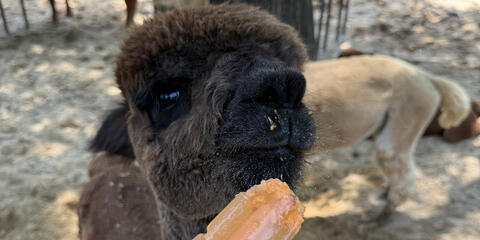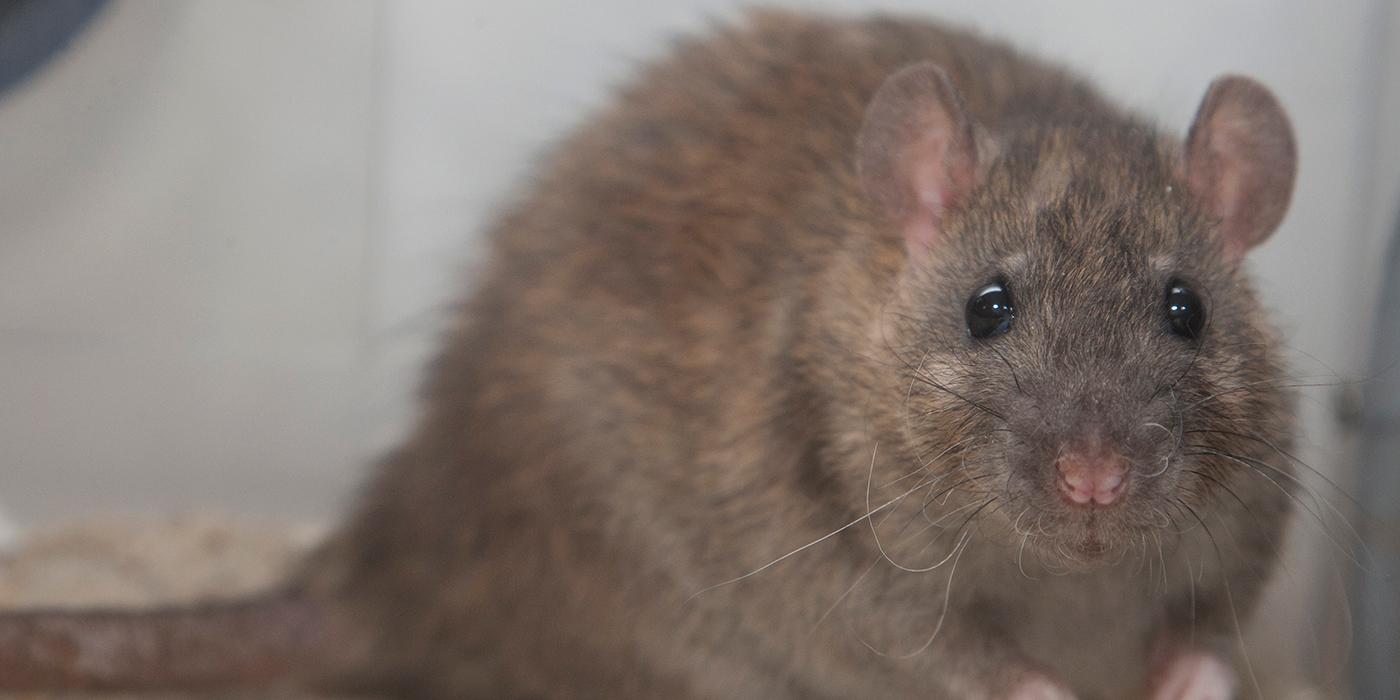Norway rats, also called brown rats, are foragers that can survive on a wide range of food, which has helped them successfully spread across the world.
Physical Description
Short, dense fur covers their bodies except for the nose, tail and ears, which are bald. Their natural colors range from gray to brown, often with lighter coloring on the underside. Members of this species have been bred as pets to be white, black or brown.
Size
Brown rats are large members of the mouse family, averaging 16 inches (40 centimeters) in total length, including the tail, which is usually just a bit shorter than its body. They range from 0.5 to just over 1 pound (200 to 500 grams), and males are generally larger than females.
Native Habitat
Despite being known as the Norway rat, Rattus norvegicus is native to northern China. International trade introduced throughout rest of the world beginning in the 18th century. Brown rats are now found on every continent except Antarctica. Originally, this species lived primarily in forests, but has since developed as a commensal species with humans, preferring to live almost anywhere humans are present. The rats now make their homes in a variety of habitats, from forests and open fields, to sewers and buildings. Brown rats may build elaborate burrows with chambers for food storage and nesting.
Lifespan
In human care, brown rats may live up to four years. In the wild, it is believed their lifespan is closer to two years.
Communication
Brown rats communicate using a variety of methods. They vocalize as well as use visual posturing to communicate among themselves.
Food/Eating Habits
Brown rats are foragers and are able to survive on a huge range of foods. One study of a rat's stomach contents revealed over 4,000 different items. This ability has helped it spread so successfully across the world. In urban areas, rats live largely on discarded human food, but may also become pests, eating food from cupboards or crops from fields. Away from urban areas, rats eat a variety of plants as well as whatever protein sources they can acquire. Rats have been known to catch fish and prey on lizards, chicks and other rodents.
The Smithsonian's National Zoo provides the rats with a daily diet consisting mainly of rodent blocks, which is a compact, nutritionally complete pellet. In addition, a fresh vegetable is added daily. During training sessions and demonstrations, the rats receive enrichment food such as seeds, nuts, pasta, fruit and yogurt.
Sleep Habits
Brown rats are most active at dusk and during the night.
Social Structure
Brown rats typically live in large, male-dominated groups with hierarchy determined by size.
Reproduction and Development
Brown rats are polygynandrous, meaning that females and males within a group have multiple partners. Females reach sexual maturity around four months and males at three months. However, females often breed at a younger age because competition delays reproduction for younger, smaller male rats. Breeding is not seasonal, though it does increase in warmer months. Females go into estrus just 18 hours after giving birth and are capable of having seven litters a year. Females experience a six-hour period of estrus, during which they mate with as many as 500 times with multiple competing males.
Gestation lasts between 22 and 24 days. Litters average around eight pups. The young will take about two weeks to open their eyes and will nurse for three to four weeks and then leave the nest. Multiple females and litters may share a nest, and females nurse and provide care for the offspring of other females.
Conservation Efforts
Brown rats are a species of least concern. They are an extremely well-represented species, so much so that humans are often trying to eradicate populations rather than conserve or protect them. Humans often dislike rats, as they predate crops and livestock and can carry parasites that spread a variety of diseases.
It is estimated that rats cause nearly a billion dollars in damage each year in the United States alone and that, by spreading diseases, rats have been responsible for more human deaths than all of the wars and human conflicts combined over the last 1,000 years.
Rats present a variety of benefits to their ecosystems as predator and prey, and their burrows help aerate the soil. Rats are popular pets, and they have contributed to advances in the fields of genetics, cognitive research, physiology, epidemiology and pathology.
Help this Species
- Are you a student? Did you love what you learned about this animal? Make it the topic of your next school project, or start a conservation club at your school. You'll learn even more and share the importance of saving species with classmates and teachers, too.
Animal News

Keeping the Farm Animals Cool with Frozen Treats



